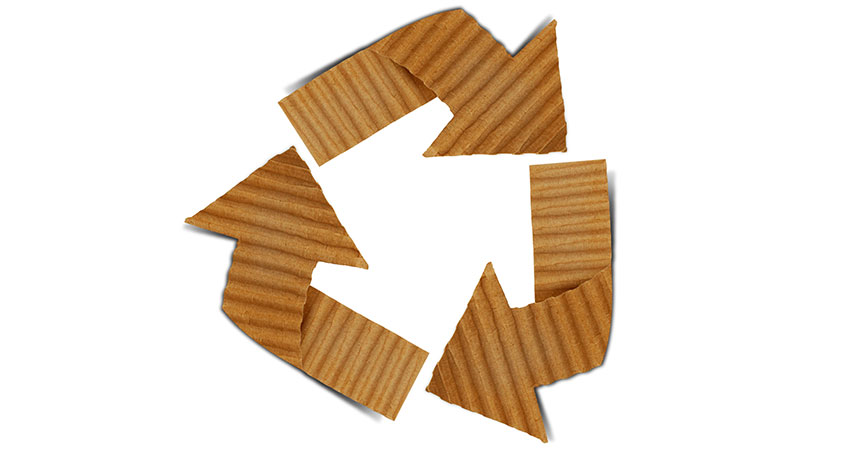We’ve all been there. You order a small gadget online and find an enormous box on the porch two days later, with the product hidden in a mass of ecommerce packaging.
But what’s a slight consumer inconvenience for you – way too much ecommerce packaging – is actually a huge burden on the economy and the environment.
Research has found the average ecommerce package is 40% too large. Just in the U.S., unnecessary ecommerce packaging equates to 5.8 million tons of paper annually, coming from an extra 98 million trees. It also requires an additional 24 million trucks to ship all that extra volume, burning an extra 1.7 billion gallons of diesel.
Luckily, the solution is obvious, trendy, and best of all, profitable: Creating more sustainable packaging.
At Ecommerce Operations Summit 2019 in Columbus, OH, three experts on this subject – Hanko Kiessner, CEO of Packsize, Jamie Markland, associate director of operations at Boll & Branch and Rob Bass, chief supply chain officer at Best Buy – shared their journey with packaging sustainability. Each has found that while sustainability has taken an investment of time and money, it has boosted the bottom line.
Bass said he has yet to find a sustainability initiative that hasn’t resulted in an ROI. “When you spend the money to do the right thing, you get a return,” he said.
Here are some insights gleaned from their panel discussion:
Review Shipping Processes to Find Missed Opportunities
Can you cut down on boxes by packaging products together? Can you resize unnecessarily large boxes? Boll & Branch was able to cut down the average order from 1.3 boxes to 1.1 boxes, resulting in huge savings on packaging materials and a 20% reduction in shipping costs.
Their motto is: If it fits, it ships. Markland said her team doesn’t worrying about sending products in individually labeled boxes.
Consolidated Packaging Slips = Quick Sustainability Win
Review your current packing slips and for each one, ask “Is it truly serving a purpose?” And if it is, could that purpose be equally effective via email? Can you consolidate multiple slips?
For example, Boll & Branch puts its mission statement on its packaging and attaches a thank you note to the packing slip.
Align Sustainability Efforts and Core Values
If your company values transparency, position your sustainable ecommerce packaging as bringing transparency to your supply chain. Best Buy’s motto is “Enrich people’s lives through technology,” and it showcases its product recycling efforts through that narrative.
While sustainability itself is the most important step, educating your customers on the work strengthens brand awareness and boosts ROI.
Don’t Sacrifice Protection for Sustainability
Instead of making the two mutually exclusive, Best Buy found a way to repackage its TV boxes to both cut down on unused space and better protect products during shipping. This ultimately resulted in an $80 million a year savings.
Protection also elevates the customer experience. It took Boll & Branch a year and a half of trial and error to perfect its box sizes, ecommerce packaging and even artwork to create a great unboxing experience within a sustainability framework.
3 Success Factors: Mindset, Technology, Trial & Error
Combine an innovative team with data-led experimentation. That team will then find the technology to automate your solution and make it profitable.
If you feel behind on the sustainability curve, the fix may not just be a new technology, but an entirely new system. Best Buy had to overhaul its national shipping network, but ultimately reduced carbon emissions by 60%. It also ushered in automated solutions such as an AutoStore order picking system from Swisslog.
Change is Easiest from the Top Down
Best Buy was on the brink of collapse in 2012. To bounce back, then-CEO Hubert Joly fostered an environment that welcomed innovative ideas and put sustainability at the forefront of its new business model. As a result, the company recently hit 2 billion pounds of recycled products and won a national sustainability award.
If a new initiative requires a system overhaul, try rolling it out at a single location to prove the concept and get executive buy-in.
Sustainability: Not a Fad, So Don’t Be Left Behind
Sustainability is becoming a baseline consumer expectation, particularly for startups. It needs to go beyond the marketing pitch to real action. Today’s consumers are well-informed and unafraid to call you out if you don’t practice what you preach.
Sustainability also lets you approach your partners, including major carriers like FedEx and USPS, and leverage your status as a responsible shipper to renegotiate your contract.
Prepare for the Future: Multi-Trip Packages
The market is ultimately moving towards reusable packages that allow consumers to send back returns in the same boxes they received them in. If your company wants to get ahead of the curve, consider this emerging trend.

